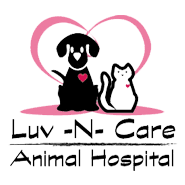Library
-
Too much vitamin A can lead to poisoning. While somewhat uncommon in North America, vitamin A toxicity is sometimes diagnosed in cats that are fed primarily table scraps. There seems to be considerable variability in how susceptible individual cats are to this problem. It takes a long time for the clinical signs associated with vitamin A toxicity to develop; symptoms do not usually appear until the cat is at least middle-aged.
-
Too much vitamin A can lead to poisoning. While somewhat uncommon in North America, vitamin A toxicity is sometimes diagnosed in dogs that are fed primarily table scraps. It takes a long time for the clinical signs associated with vitamin A toxicity to develop; symptoms do not usually appear until the dog is at least middle-aged.
-
Vitamin D poisoning occurs when a cat ingests a toxic dose of vitamin D. A common source of vitamin D poisoning is when a cat accidentally ingests rodenticides containing vitamin D. The initial clinical signs of poisoning occur anywhere from 8 to 48 hours after ingestion and include depression, weakness, and appetite loss. Vomiting, increased drinking and urination, constipation, and dehydration typically follow these signs.
-
Vitamin D poisoning occurs when a dog ingests a toxic dose of vitamin D. A common source of vitamin D poisoning is when a dog accidentally ingests rodenticides containing vitamin D. Another source of vitamin D poisoning is the accidental ingestion of certain human medications.
-
The Vizsla is a Hungarian pointer, utilized by the Magyar nomadic tribe along with their falcons, to hunt birds and track game. They need a lot of vigorous activity, but as long as they get it, they are gentle enough to lie quietly by Grandpa's feet as he snoozes.
-
Vomiting may be caused by disorders of the stomach, but is a clinical sign that can occur with many diseases and problems. Different types of vomiting are reviewed. Any required tests are determined based on physical examination of your cat and questions regarding how your cat has been acting and feeling at home.
-
Vomiting is the forceful evacuation of stomach contents. It is a clinical sign of a disease. Most cases of acute vomiting resolve quickly with simple treatment, without the underlying cause being diagnosed. Any required tests are determined based on physical examination of your pet and the signs your dog has been displaying at home.
-
Von Willebrand's disease is an inherited bleeding disorder. Cats with von Willebrand's disease lack von Willebrand's factor, a blood protein that helps platelets adhere to sites of blood vessel injury. Although affected cats have normal platelets, they experience clotting difficulties because their platelets do not properly adhere to injury sites.
-
Von Willebrand’s disease is a bleeding disorder that results from the lack of von Willebrand factor (vWF), a protein needed to help platelets clump together and seal broken blood vessels. Affected dogs have varying amounts of vWF. Doberman Pinschers are the most common breed affected but they are mildly affected compared to Scottish terriers and Chesapeake Bay retrievers. Dogs can develop bleeding at any time in their life. Certain drugs that interfere with platelet function should be avoided in affected dogs. Treatment of severely affected dogs requires a blood or plasma transfusion. Screening of breeding animals is recommended to reduce the incidence of the disease.
-
Vulvoplasty, also known as episioplasty, is a surgical procedure that your veterinarian may recommend to correct a conformational issue known as a recessed vulva. Your veterinarian will remove a crescent-shaped piece of tissue from above the vulva, allowing the skin to be pulled upwards into a more normal conformation. This procedure is performed under general anesthesia. Your pet will be intubated with an endotracheal tube. After surgery, you will need to give pain medications and antibiotics as directed and keep your dog confined/restricted for approximately two weeks. Skin sutures, if used, can typically be removed 10-14 days after surgery.

